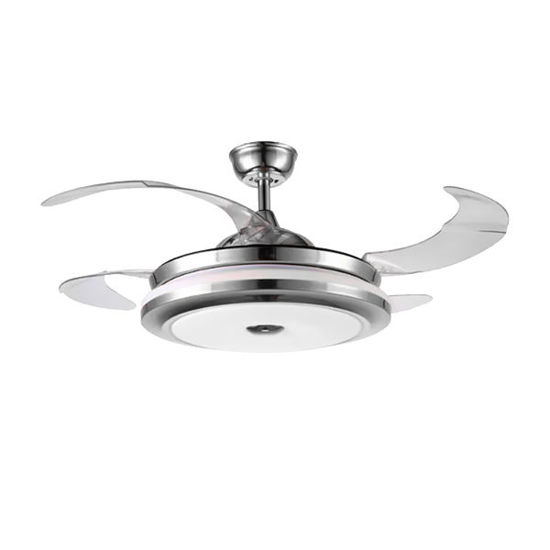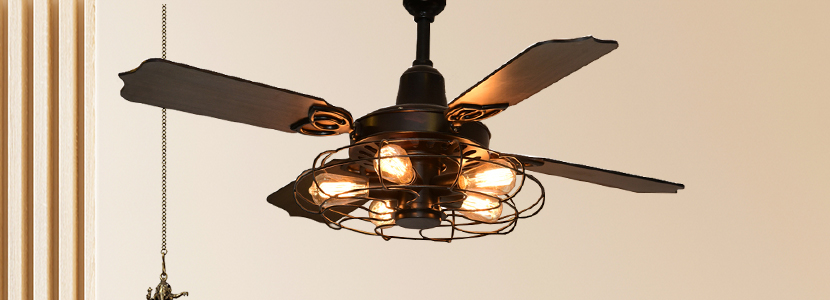Ceiling fans have come a long way from being mere functional appliances to becoming stylish decor elements that can transform a room’s aesthetic. As someone who has dabbled in home interior design, I’ve found that decorative ceiling fans can add character and comfort to any space. In this comprehensive guide, we’ll explore everything you need to know about decorative ceiling fans, from styles and benefits to maintenance and installation tips. Let’s dive into the world of ceiling fans that are as beautiful as they are functional!
What Are Decorative Ceiling Fans?
Decorative ceiling fans are designed not only to circulate air but also to enhance the visual appeal of a room. They come in various styles, materials, and colors, allowing you to choose one that fits your decor theme, whether it be modern, traditional, farmhouse, or bohemian.
Why Choose a Decorative Ceiling Fan?
Besides being visually pleasing, decorative ceiling fans offer several advantages:
- Improved Air Circulation: Help maintain comfortable temperatures.
- Energy Efficiency: Can reduce reliance on air conditioning.
- Versatile Design: Available in countless styles to match any decor.
- Lighting Options: Many come with integrated lighting for added functionality.
Types of Decorative Ceiling Fans
When selecting a decorative ceiling fan, it’s crucial to understand the various styles available. Here’s a breakdown of the most popular types:
1. Modern Ceiling Fans
Modern ceiling fans boast sleek lines and minimalist designs, often featuring metallic finishes or unique blade shapes. They are perfect for contemporary homes.
/product/34/378481/1.jpg)
2. Rustic Ceiling Fans
Rustic ceiling fans are often made from wood and feature distressed finishes, making them ideal for country or farmhouse-style homes.
3. Traditional Ceiling Fans
These fans often have an ornate design with rich wood finishes and detailing. They are best suited for classic-style interiors.
4. Industrial Ceiling Fans
Industrial ceiling fans are characterized by their utilitarian look, often featuring exposed bulbs and raw materials. They add a touch of urban chic to any space.
5. Tropical Ceiling Fans
These fans typically feature large, wide blades made from natural materials, perfect for creating a relaxed, beachy atmosphere.

Choosing the Right Decorative Ceiling Fan
When shopping for the perfect ceiling fan, consider the following factors to ensure you make the right choice:
1. Room Size
The size of your room will dictate the fan size you need. A fan that’s too small won’t effectively circulate air, while one that’s too large may overwhelm a space.

2. Ceiling Height
Consider the height of your ceiling. For high ceilings, a longer downrod is often necessary, while flush mount fans are ideal for low ceilings.
3. Style and Finish
Your fan should complement your home’s decor. Choose a finish that matches your furniture and color scheme.
/product/34/378481/2.jpg)
4. Motor Quality and Efficiency
Look for fans with high-quality motors and energy-efficient ratings to ensure longevity and lower energy costs.
5. Blade Pitch
The pitch of the blades affects how much air the fan can move. A pitch of 12-15 degrees is ideal for optimal airflow.

Comparison of Popular Decorative Ceiling Fans
| Fan Model | Style | Blade Span | Motor Type | Price |
|---|---|---|---|---|
| Hunter Fan Company | Traditional | 52 inches | DC Motor | $199 |
| Westinghouse | Modern | 48 inches | AC Motor | $120 |
| Minka Aire | Industrial | 54 inches | DC Motor | $329 |
| Harbor Breeze | Tropical | 60 inches | AC Motor | $150 |
Installation and Maintenance of Decorative Ceiling Fans
Once you’ve chosen the perfect fan, proper installation and maintenance are crucial for optimal performance.

Installation Tips
Here are some quick tips for installing your decorative ceiling fan:
- Ensure the fan is mounted on a sturdy support beam.
- Follow the manufacturer’s instructions carefully.
- Always turn off power at the circuit breaker before installation.
- If uncertain, consider hiring a professional electrician.
Maintenance Guidelines
To keep your ceiling fan in top shape, follow these maintenance guidelines:
- Clean the blades regularly to prevent dust accumulation.
- Check for any loose screws or parts every few months.
- Lubricate the motor and pivot points as needed.
- Consider seasonal adjustments: run clockwise in winter to circulate warm air and counter-clockwise in summer to cool your space.
Pros and Cons of Decorative Ceiling Fans
Pros
- Adds a stylish element to your decor.
- Provides comfort by improving air circulation.
- May reduce energy costs by making HVAC systems more efficient.
- Available in a range of styles and features.
Cons
- Installation can be complex and may require professional help.
- Some fans may not be as quiet as expected.
- Higher-end models can be quite costly.
FAQs About Decorative Ceiling Fans
1. How do I choose the right size ceiling fan for my room?
Measure your room’s square footage. For rooms up to 75 sq. ft., choose a fan with a 29-36 inch blade span; for 76-144 sq. ft., go for 36-42 inches; 144-225 sq. ft., use 44 inches; and for larger areas, choose a fan with a blade span of 50-60 inches.
2. Can I install a ceiling fan myself?
While it is possible to install a ceiling fan yourself if you have basic electrical knowledge, hiring a professional is advisable if you are unsure about wiring or local codes.
3. Do decorative ceiling fans use a lot of electricity?
Most modern ceiling fans are energy-efficient and use less electricity than air conditioning units. Look for models with ENERGY STAR ratings to ensure lower energy consumption.
4. How do I clean my ceiling fan?
Use a microfiber cloth or a duster to wipe down the blades. For a deeper clean, you can use a damp cloth and gentle detergent. Ensure you turn off the fan before cleaning!
5. Can ceiling fans provide heating in winter?
Yes! If your ceiling fan has a reverse function, you can run it clockwise during winter to circulate warm air that rises, which can help lower heating costs.
Conclusion
Decorative ceiling fans are much more than just functional devices; they are a fantastic addition to any room, merging style and utility seamlessly. Whether you prefer a sophisticated modern fan or a charming rustic model, there’s something out there to fit your unique taste.
By considering your space, style preferences, and maintenance needs, you’ll be well on your way to choosing the perfect decorative ceiling fan that enhances your home’s ambiance while keeping you comfortable all year round. Happy decorating!